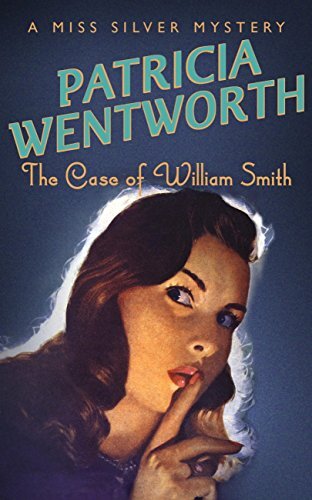The Case Of William Smith

A review of The Case of William Smith by Patricia Wentworth
Originally published in 1948 The Case of William Smith is the thirteenth in Wentworth’s Miss Silver series and treats as its central premise a theme which must have resonated with her contemporary readers, a man who has returned from the Second World War after having been interned in a concentration camp without a recollection of who he is and of his past. On release from hospital he was given an identity tag with the name of William Smith, although on his return from home, his cursory investigations into his alleged background lead him to think he might not be who he was told he was.
Back in Blighty and on civvy street William takes a job in a toyshop where he uses his carving skills acquired in the camp to good effect, making wooden animals and birds that delight the local children. The other major protagonist in the story is Katherine Evesley whose trust fund is slow in making its regular payments, forcing her to take a job, naturally at the toyshop where she and William hit it off and get married.
However, there is a darker subplot which emerges when William visits Evesley’s who are managing Katherine’s trust fund to interest them in funding the expansion of the toy animal business. He is granted an interview after office hours with the secretary, Mavis Jones, who seems aghast to see him. There are a series of curious incidents involving people being pushed in front of buses, one leading to a fatality, and William suffers a couple of attacks, one of which is witnessed by Frank Abbott of the Yard who vaguely recognises him from a party pre-war but cannot place him. Katherine confides to Abbott her concerns about William’s safety and on his recommendation engages Miss Silver to investigate.
It does not take a genius to realise that there is something about William’s past that threatens others and Miss Silver, in her inimitable fashion and to the world-weary disdain of Inspector Lamb, sets out to discover what it is. Tangled family relationship and financial shenanigans are at the centre of plot against William, and it emerges that Katherine knows more, especially about William’s previous identity, than she has let on. The eminence grise is uncovered in a dramatic finale which ratchets up the final body count and, naturally, there is a happy and romantic ending.
What might jar on the modern reader is the less than sympathetic handling of mental health issues. Consigning someone to an institution, sadly, was often the way that people with erratic behavioural traits were dealt with and Wentworth does not allow her characters to show any compassion for and willingness to understand what the underlying problems are.
Wentworth’s books are a tad formulaic and boilerplate and there is little complexity to the plot or, really, any surprise in what is behind the conspiracy against William. However, she more than makes up for any deficiencies in the puzzle by her ability to tell a story with verve and humour, keeping the reader engaged with a style that is economic rather than florid and which drives the story forward. It is pure entertainment and a lovely way o spend a few hours as the night draws in.



